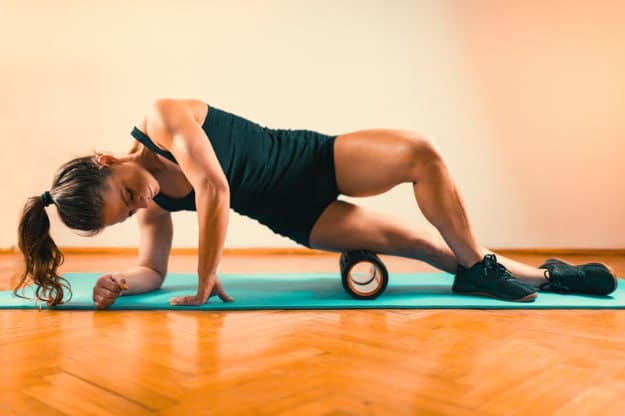What is foam rolling?
Foam rolling, a self-myofascial release technique, has gained traction among athletes for its potential benefits in flexibility, recovery, and performance. By rolling various body parts over the foam roller, the body’s weight creates a self-massage effect which stimulates various tissues and enhances circulation. Simultaneously, foam rolling also creates compression & ischemic pressure on tender areas which has been found to reduce pain and increase range of motion (Field et al., 2010). While long-supported by anecdotal evidence, recent research provides insights into its practical applications for athletes.
What does the research say about foam rolling?
Source | Summary |
(Cheatham, Kolber, Cain, & Lee, 2015) | Foam rolling…
However, more research is needed due to the diversity of study protocols reviewed; the long-term efficacy of foam rolling interventions (beyond short-term benefits) remains to be discovered. |
(Beardsley & Skarabot, 2015) |
|
(Wiewelhove et al., 2019) | Pre-rolling (as a warm-up activity…)
Post-rolling (as a post-workout/recovery tool…)
|
Practical Application (Behm et al., 2020)
Prescribing specific acute variables for foam rolling is challenging due to individual factors like experience, pain threshold, tissue health, and stress levels.
However, for immediate improvements in range of motion, a suggested guideline includes 1-3 sets, 30-120 seconds duration, and a rolling speed of 2-4 seconds per roll over the desired muscle group.
This can be done before, during, and after training sessions, as well as on off days. It is also important to consider the type of roller that you are using (soft or firm; smooth or textured) because most people tend to approach foam rolling with a “no pain, no gain” mentality. Ideally, striving for moderate discomfort while foam rolling is an appropriate entry point.
More specifically, if you’re foam rolling at the start of your workout, select 2-6 foam rolling exercises and follow them up with some mobility drills or dynamic stretches. Keep preparation time under 20 minutes unless the focus of your training session is to maximise flexibility and joint range of motion.
If you’re foam rolling as a post-training cooldown, select as many foam roll exercises as desired and/or time will allow for. Roll slow and focus on slower, controlled breathing to help stimulate a relaxation (parasympathetic) response. This can also be followed up with low-intensity static stretches to maximise relaxation.
Conclusion
Key Points
● Foam rolling can acutely improve joint range of motion and reduce delayed onset muscle soreness (DOMS)
● Individualize foam rolling based on your body’s needs
● 1-3 sets of 30-120s of foam rolling over the desired muscle group is recommended
Foam rolling is scientifically validated as a valuable tool for enhancing tissue health, readiness to train, recovery, and overall performance. Incorporating foam rolling into your routine, even for short durations, can make a significant difference in how you feel and move.
References
Beardsley, C., & Škarabot, J. (2015). Effects of self-myofascial release: A systematic review. Journal of Bodywork and Movement Therapies, 19(4), 747-758. doi:10.1016/j.jbmt.2015.08.007
Behm, D. G., Alizadeh, S., Hadjizadeh Anvar, S., Mahmoud, M. M. I., Ramsay, E., Hanlon, C., & Cheatham, S. (2020). Foam Rolling Prescription: A Clinical Commentary. Journal of strength and conditioning research, 34(11), 3301–3308. https://doi.org/10.1519/JSC.0000000000003765
Cheatham, S. W., Kolber, M. J., Cain, M., & Lee, M. (2015). The effects of self-myofascial release using a foam roller or roller massager on joint range of motion, muscle recovery and performance: A systematic review. Int J Sports Phys Ther, 10(6), 827-38. Retrieved from https://pubmed.ncbi.nlm.nih.gov/26618062/
Field, T., Diego, M., & Hernandez-Reif, M. (2010). Moderate pressure is essential for massage therapy effects. The International journal of neuroscience, 120(5), 381–385. https://doi.org/10.3109/00207450903579475
Wiewelhove, T., Döweling, A., Schneider, C., Hottenrott, L., Meyer, T., Kellmann, M., … Ferrauti, A. (2019). A meta-analysis of the effects of foam rolling on performance and recovery. Frontiers in Physiology, 10. doi:10.3389/fphys.2019.00376


